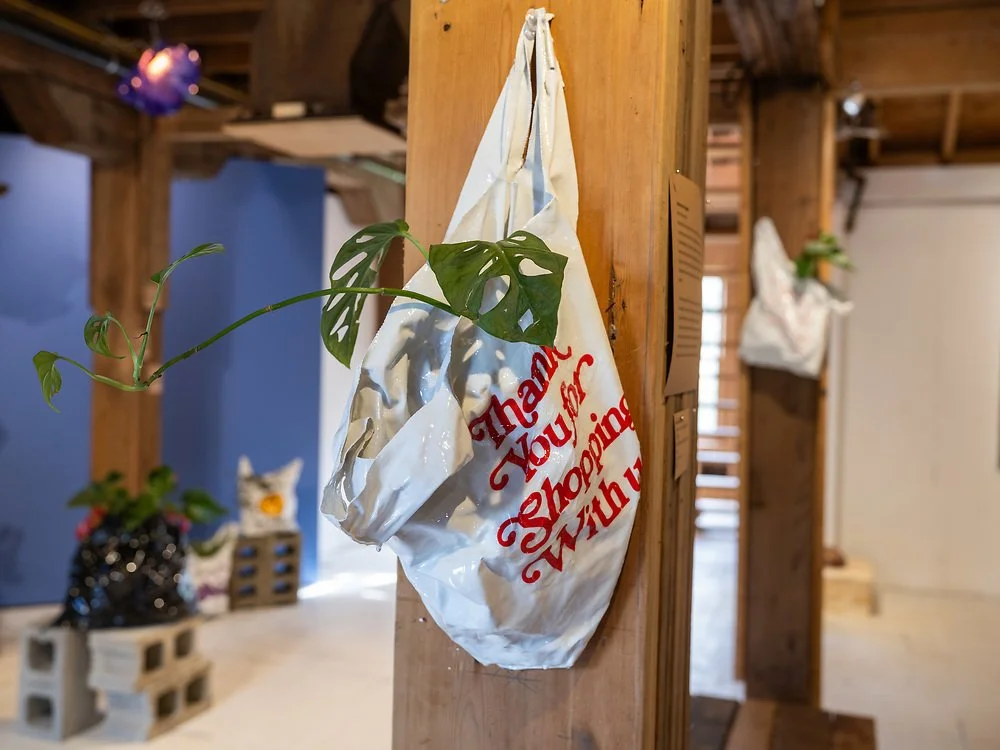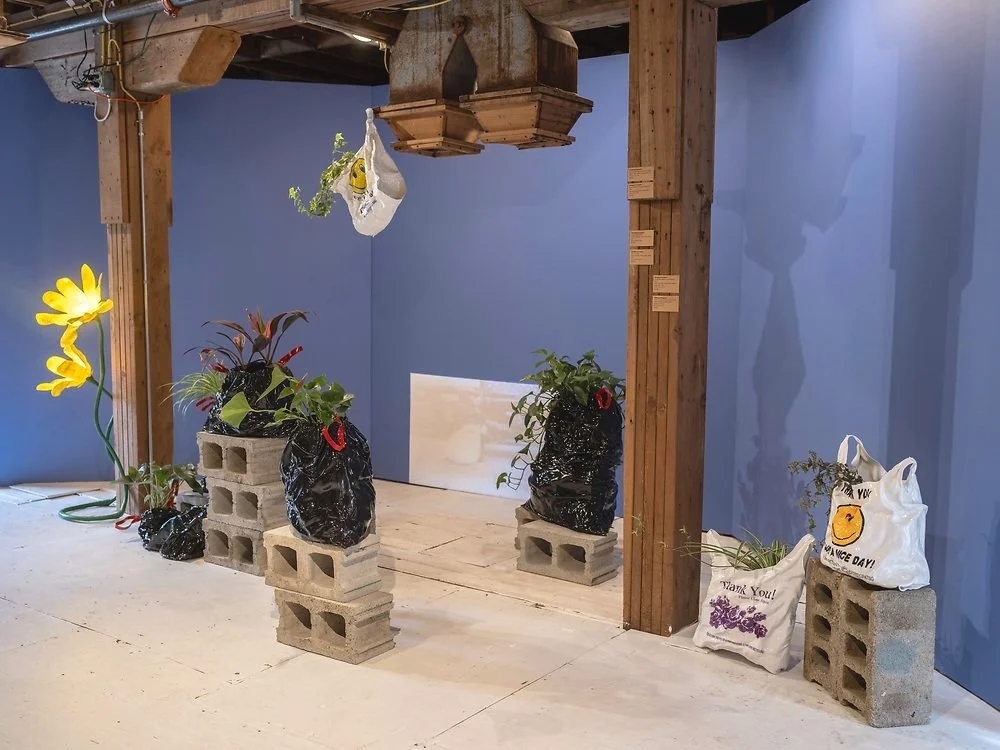Flush, 2024, Spring Break Art Show LA
Hyperallergic review here
Flush, curated by Thomas Martinez Pilnik, is a two-booth exhibition with work by Janet Loren Hill, Taylor Lee Nicholson, and Marianna Peragallo that invites visitors into two wildly contrasting spaces. One is an indoor public bathroom, dank and filled with the trappings of private moments and public awkwardness. The other is a reimagined Garden of Eden, overgrown uncanny imitations of nature, and the sublime. During the run-of-show, visitors will be asked to leave behind their dreams, desires, fears, and anxieties in the form of graffiti in the bathroom. Flush disregards the line between what is real and what is not, and instead presents a fever dream of the imagination.
To flush is to discard, to get rid of, and to forget. “Goodbye, Gretta the Goldfish!” But once she’s out of sight and down the drain, and your face - now flush with sadness, embarrassment, and grief - has cooled off, where do we all then go? In our present reality, we are uninterested in what’s next unless it gives us an advantage. But where does the goldfish go? Where does our anger lead? Flush insists that easing on down these Yellow Brick Roads - whether the ones from The Wiz or The Wizard of Oz - offers us more insight, truth, and understanding than just holding ourselves to the phrase “out of sight, out of mind.”
Marianna Peragallo’s sculptures recontextualize peripheral domestic objects. The objects she recreates subvert expectations imposed on them by humorously misbehaving and resigning from their assigned roles, blurring the real and surreal. Items like garbage bags, plastic shopping bags, and rubber gloves are repurposed as vessels that nurture and sustain the growth of houseplants, while faux flowers role-play as lamps. Her sculptures say, “Have a Nice Day, but don’t overlook us or you’ll misunderstand what it means to be human.”
Taylor Lee Nicholson’s work cries, “Touch me, Feel me, Eat me!” But don’t get too close (come closer!) lest you discover the trash inside. Their installations, filled with ‘bloom-down-cheek’d peaches’, apricots, cigarettes, and strawberries, culminate in grand gestures of opulence and excess, but in fact, reveal the discarded remnants of a life richly lived and poorly treated. Like Snow White’s Wicked Witch, Nicholson is lurking in the woods offering you a sweet, juicy apple - but be warned, all is not as it seems.
Janet Loren Hill offers up a heaping bowl of propaganda coded beneath rich and ripe iconographies. Her sculptures and paintings point toward memories of the outdoors and external scenes but dive deep into the roots of internal ideologies. Burning beneath Hill’s spectacular vistas, rolling hills, and medieval party tricks are rotting teeth, violent flowers, and the false intimacy of a binocular peering right at you.
Thomas Martinez Pilnik finds peace in the haptic memory of shag carpets, the kind that crawled up bathtubs in pink São Paulo apartments and harbored mold as the bidet splashed into their fibers. His work combines this softness with the critical coldness yet carefully crafted qualities embedded within ceramics. Though the works tell personal stories, his narratives unravel across broader political, social, and civil histories.
Together, these artists create work that is cute, saccharine, and appealing from afar and so invites people in. Once lured, the audience is asked to reflect on something darker and, in turn, is offered something that feels more like the truth. As is often the case, the inside is where the truth lies even though the outside can be a sweeter space. Flush is an invitation to let yourself be deceived. To fall into a delicious and delightful trap. Of course, open your eyes and see - but, more importantly, open your mind and feel.













































































































